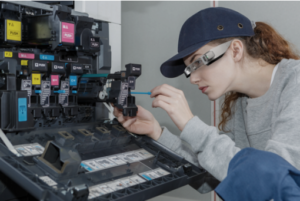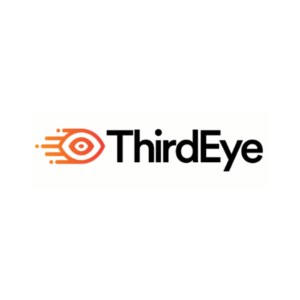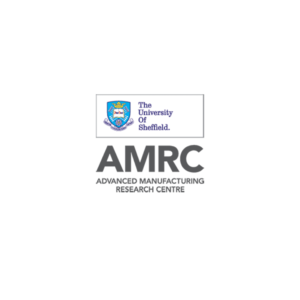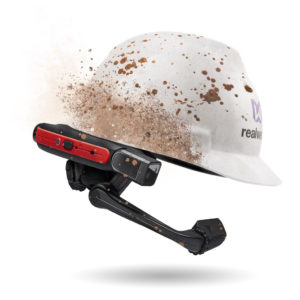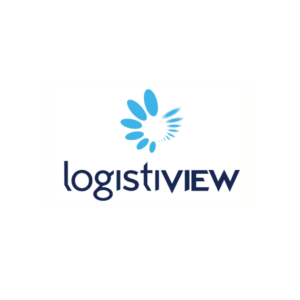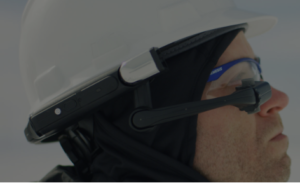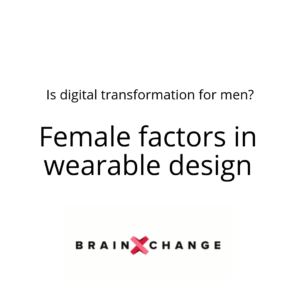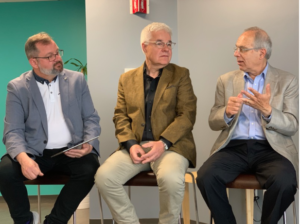Montgomerie writes “It’s a thrill to see how rapidly AR and other technologies are evolving. And it’s just as gratifying to see just how these knowledge-sharing technologies are meeting the business needs in the marketplace.
Just a few years ago, enterprise AR was an emerging technology. But one thing became crystal-clear at AWE this year: AR for the enterprise is no longer a novelty. It’s not just a wild idea to test out in a sandbox. Companies are using AR to solve real business problems. They’re giving their workforce access to critical, specialized knowledge when and where they need it. After seeing impressive use cases, and talking to the enterprise innovators that now use AR for real-world applications — I can safely say: the emerging-tech phase is in the rearview mirror.
We’ve spent a lot of time talking with executives ready to test AR in parts of their business. They’re typically optimistic, but cautious: I get it — but where do I start, and how do I get my team on board?
There are definitely use cases that AR is better suited for than others in an enterprise setting. In order to ensure you’re choosing the right use case for your organization, here are three mistakes to avoid as you prepare your business for AR adoption:
1) Don’t plan to rewire your entire business. You can’t expect AR to replace a process across your global operations overnight. Start smart. Find a discreet project where you can address a real-world business problem. Ensure it’s a process that can be enhanced by real-time knowledge transfer. And above all, ensure it’s a use case where you can measure and share quantifiable results.
What scenarios might be a good candidate for your business’ first use case? Be sure to consider workflows and teams that would benefit from augmented knowledge like step-by-step instructions, contextual digital overlays, and even live video support from a remote expert. For instance, imagine how impactful on-demand expertise – by way of real-time remote assistance or pre-built guided instructions – could be for a field service team or remote workers managing highly-specialized manufacturing tasks.
2) Avoid complexity and embrace efficiency. From the outset, it’s important to understand where AR will most benefit the people and processes that are the lifeblood of your business. You need to make sure it brings instant expertise and context to the task at-hand. You don’t want to add another layer of process; you want to ensure workers can access knowledge from subject matter experts or resources, wherever they are and whenever they need them.
Some questions to ask along the way:
- What direction or communications do your remote workers need most while they are in their workstream?
- Where can real-time expertise help them complete tasks most efficiently and effectively?
- What tasks in physical space — such as locating repair points, modeling, assembly or QA — could benefit from real-time guidance or visual, intuitive instructions?
- What situations might benefit from live assistance or access to a support recording of the same scenario, versus specialized standalone training?
- What do your senior-staff subject matter experts know that new hires don’t — and can AR-enhanced support, communications or replays help bridge the gap?
3) Don’t lose sight of business realities. At the end of the day, if your first AR use case fails to provide ROI, you might not get a chance to kick off a second one. Ensure you’ve allocated ample budget to complete a project successfully. But don’t burn budget on proprietary hardware or a closed software platform. You likely can build out an initiative with an agnostic AR platform that extends across devices and operating systems your team already uses. Creating a smart budget will help you more quickly achieve ROI.
Beyond planning for cost, you’ll need to navigate another business reality: you’re rarely in it alone. Your AR project will need buy-in from two additional critical sets of stakeholders: your leadership and your IT department. An advocate inside the business can help make the case to leadership for the investment, and ensure they see the hard-cost savings potential in the unprecedented levels of knowledge sharing that AR allows.
Just as critically, however, IT needs to be on board, as early as possible. IT can help you clear hurdles around security, governance or other compliance protocols, like limited-access to intellectual property you might need to share over an AR platform. Approach your AR use case with IT as a full deployment partner, so you’re integrated with the existing systems and infrastructure that knowledge and communications already flow through.
From conversations with business leaders, I know it can seem daunting to get an AR project deployed. With the right use case, you can unlock expertise, share knowledge and add value well beyond the objectives of your initial project. Ready to get started? Download our free eBook, “Building the Perfect AR Use Case” for a step-by-step guide to launching an enterprise AR initiative.
